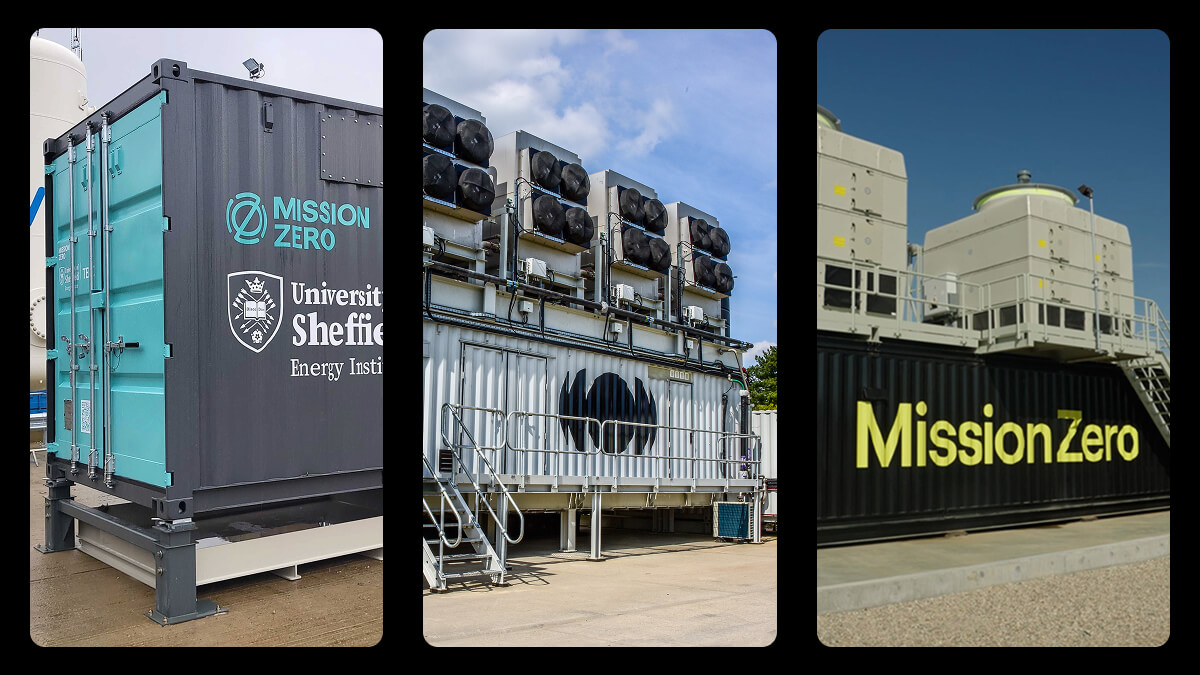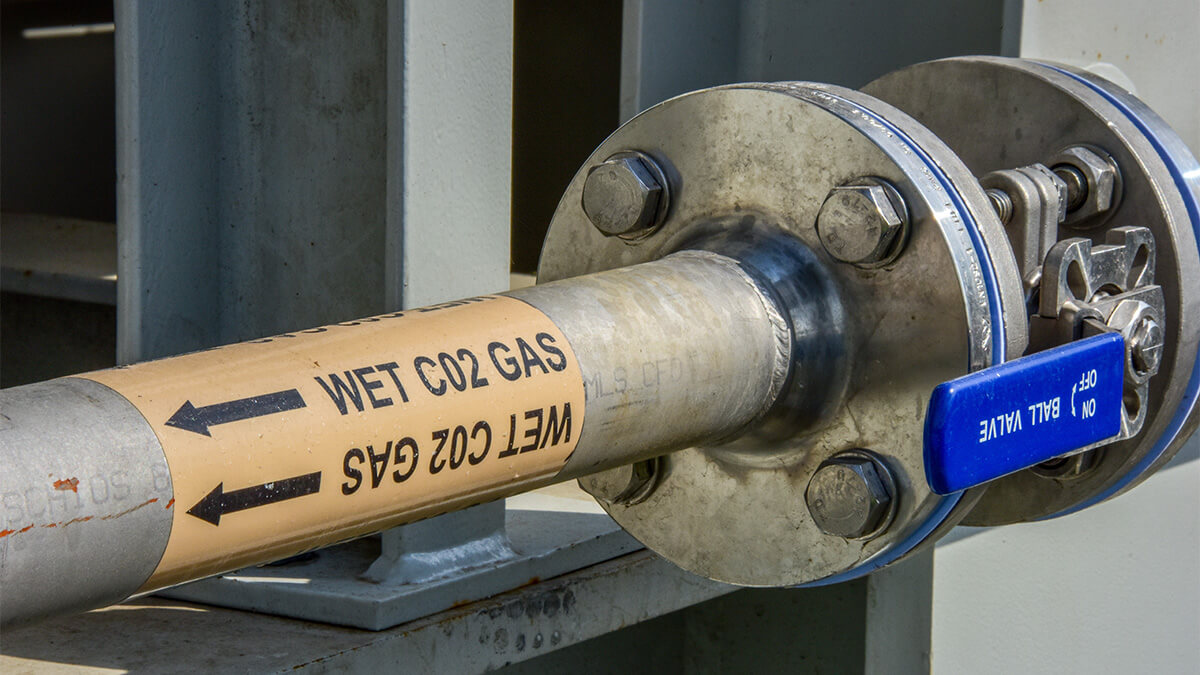
Starting a direct air capture (DAC) company during a global pandemic, it turns out, isn’t such a bad idea. Five months after founding Mission Zero Technologies in 2020, we won a UK government competition to design our first pilot plant. Things rapidly accelerated from there — from signing a contract with Stripe and winning the XPRIZE competition, to growing the team and putting the UK’s first DAC plant on the ground.
Yet, we’re convinced that the same strategic choices, design thinking, and approach to R&D that allowed us to move a brand new DAC technology from a back-of-envelope concept to a live plant in three years can easily be applied by other startups looking to do the same.
And we urgently need them to. To have the best shot at mitigating the climate crisis, we need to test and validate as many brilliant solutions as quickly as possible. To that end, here are the headlines and learnings behind our rapid DAC scaling journey so far.
Innovating where it matters
Getting a brand new climate technology to achieve the scale and impact needed for Net Zero is a mammoth undertaking fraught with many hard challenges to solve. With fewer than 30 years left to do that, what we learnt is: simply don't solve what doesn't need solving.
Investing enough time to engage with experts at the earliest stages allowed us to innovate where it matters most and ensure the fastest route to delivery — resolving issues early, and distinguishing what’s essential from what’s nice to have.
Too often, it seems companies go with the best initial technological idea that they have and don’t fully consider the real world implications for realising it at scale. Given that there are so many different ways to go about direct air capture, we chose to invest a large amount of time up front to get a holistic bearing on our landscape. We believe that ‘the best way to do DAC’ isn’t purely about the science; it’s about finding the easiest way to achieve harmony and flexibility with the systems that exist around it.
Before locking in our scientific process, we spent a lot of time sound boarding ideas with respected academics in the field and getting feedback from the processes downstream of each concept to ensure they were fit for purpose for different stages of development. We also fully explored what was upstream to see how we could leverage existing, mature technologies and ensure supply chain resilience for quick global scaling.
Moving beyond the university lab R&D model

A lot of physical technology development has followed a well-trodden path: you create a test-tube-scale solution at a university, prove its works under highly controlled conditions, publish papers, get investment to spin it out into a company, start bench top scaling, refine the material and physical stability of different parts of the tech, create pilots, and start to scale a decade later.
This is the route that a lot of first-generation climate technologies like solar PV took to commercialise and scale. To an extent, this is because the scaling challenge has many aspects where innovation is needed — including scientific optimisation, business model refinement, and supply chain management. These are often tackled in their own silos and then fingers are crossed that the solutions play well together later in the growth journey.
We realised we had to change the game here — in carbon removal, we simply don’t have time to do that. That’s why we’ve championed an R&D approach that keeps things light and focused, including:
- Using one challenge to help solve another: Early on in our engineering work, we adopted the approach of using supply chain constraints as the endpoint to define the acceptable solution space for our scientific R&D. This has been instrumental in enabling our rapid technology delivery times and avoiding traditional supply bottlenecks.
- Adopting software’s ‘MVP’ approach: Working out what your constraints are and identifying the minimum number of requirements needed to work towards your objective. We focused on the minimum information required to design our first plant and got most of the information we needed in about one month of R&D.
- Parallelising problem solving: Once we achieved our proof of concept, we effectively started conducting further problem solving in parallel to progress rapidly. Even after starting on our pilot design, we continued to define and develop our understanding of the underlying chemistry, and fed appropriate learnings back into the ongoing design work.
- Leveraging established knowledge: Wherever possible, we made use of first principles, literature studies, and industrial knowledge to reduce uncertainty for key technical risks. For example, instead of conducting extensive stability testing up-front, we used established literature and insights from suppliers to estimate degradation rates and mechanisms for our chemicals and materials.
Were we three years into an academic lab, we would likely still be iterating the chemistry of our technology instead of gearing up to put our second and third DAC plants on the ground.
Prioritising values-driven partnerships
Scaling brand new climate technology requires strong, catalytic relationships beyond your immediate team — from early investors and project developers, right through to the suppliers that help to bring your first R&D stack to life.



Shout out to Greg, the first piece of R&D technology we built in house.
It’s tempting to go big immediately, but you can’t march straight up to a global EPC player and expect to be taken seriously (we learnt this the hard way). We’ve since found that prioritising day-one partnerships based on values and mission alignment is a lot more valuable and rewarding. Your early collaborators are effectively taking a massive risk in working with you, so there needs to be a clear value-add for them.
Our advantage lay in offering new suppliers a way to strengthen their business models to pivot away from oil and gas and diversify their portfolio. We learned to put supplier clout and size aside — pivoting quickly wherever engagement felt like a hard sell or lacked enthusiasm.

Creating a catalytic team
People will always be our greatest predictor and enabler of success. The challenge of assembling an expert team, empowering them to make quick-fire judgements through tremendous ambiguity, and ensuring innovation stays aligned can’t be overstated. Our cocktail for tackling them involved:
- Nurturing a zero-blame culture — when you’re doing something that no one has ever done before, you are going to get things wrong. To be creative and come up with great things, you have to feel safe. That’s why it was essential for us to get people comfortable with experiments not going to plan — breaking things without there being negative consequences.
- Hiring for the whole — Alongside abstraction, vision, and creative chaos, you need detail, pragmatism, and order. We intentionally looked for complementary characteristics to achieve balance and harmony in our team — ensuring that we threaded diversity of thought, approach, and perspective throughout the business.
- Offering extreme ownership — Instead of having one person solving everything, we wanted to create a distributed problem solving team. To make that work, it was important to give people the confidence and autonomy to make decisions fast and proceed with experiments, while also having enough contact to align and nudge things back onto track when they deviate. That extended to treating our masters grads like PhD students — giving them the autonomy, trust, and respect to fully own the projects in their care.

Our primary advice for other DAC startups
- Be bold. You don’t need to have a PhD with results to apply for a pilot program competition.
- Hire as soon as you feel the need for a certain skill set — it’s probably already urgent. Don’t wait for everything to fall into place.
- Continuously reflect on the time it takes to increase understanding of a problem (it roughly follows the Pareto principle), acknowledging that some rabbit holes may have no end.






